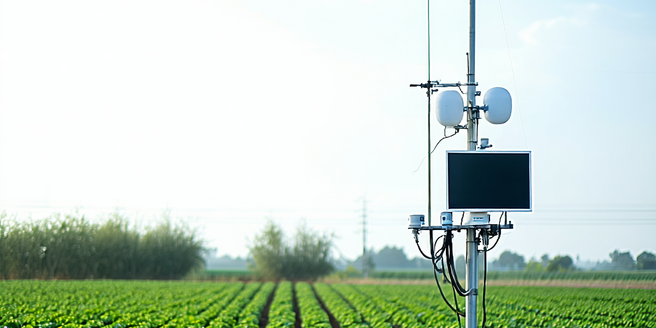
Understanding the Needs of Modern Farmers
Modern farmers face unique challenges as they are affected by climate variability, market demands, and technological advancements. Understanding these needs involves recognizing the importance of real-time data, which can assist in strategic planning and informed decision-making. Farmers require access to accurate weather forecasts to plan planting, irrigation, and harvesting. Moreover, they need comprehensive tools to analyze soil conditions and track crop health. Modern farmers are also leaning towards sustainable practices, requiring data that supports environmentally friendly techniques. Weather apps offer a crucial interface in delivering timely information and updates on potential weather disruptions. By tapping into these resources, farmers can optimize labor, reduce risks, and increase productivity, helping them stay resilient in an ever-changing agricultural landscape.
Features to Look for in Weather Apps for Farming
When selecting a weather app for agriculture, farmers should prioritize features that enhance their decision-making capabilities. The app should offer hyper-local forecasts, allowing farmers to receive specific weather predictions for their exact location. Radar and satellite images are invaluable for visualizing weather patterns and predicting storm paths. Additionally, the app should include alerts for severe weather conditions like frost, hail, or high winds, enabling timely protective measures. Customizable dashboards that track key metrics such as temperature, humidity, and rainfall can help tailor the app to specific farm needs. The availability of historical weather data is another valuable feature, allowing farmers to analyze trends for better planning. Ultimately, ease of use, reliability, and the ability to integrate with other farm management systems are essential for maximizing the benefits of weather apps in agriculture.
Top-Rated Weather Apps and Their Unique Benefits
Several weather apps stand out for their reliability and unique offerings tailored to the agricultural sector. Apps like FarmWeather are praised for their user-friendly interface and comprehensive data sets covering temperature, precipitation, and wind speeds. Another notable app, AgroClimate, provides farmers with decision-support tools and seasonal climate predictions. Weather Underground offers hyper-local forecasting via its network of personal weather stations. FieldView offers integration with farm machinery to correlate weather patterns with field operations. Each app brings distinct advantages, such as advanced alert systems or the ability to compare forecasts from multiple sources. By leveraging these specialized apps, farmers can enhance operational efficiency, reduce weather-related risks, and improve overall crop management. Choosing the right app depends on the farm’s specific needs and the level of detail required for optimal weather assessment.
How Accurate Weather Forecasts Can Boost Crop Yields
Accurate weather forecasts play a pivotal role in boosting crop yields by providing farmers with the critical information needed for optimal timing of agricultural activities. Knowing the precise window for planting can prevent crop loss due to unexpected frosts or prolonged droughts. Similarly, weather forecasts guide irrigation schedules, ensuring that crops receive adequate water without wastage. Accurate predictions of rain events can reduce the reliance on artificial irrigation, leading to cost savings and improved soil health. Furthermore, forecasts enable farmers to prepare for potential pest and disease outbreaks that may occur with changing weather conditions. This preparedness minimizes damage and maximizes yield potential. By utilizing accurate weather forecasts, farmers can make better-informed decisions that contribute to higher productivity, increased crop quality, and enhanced farm profitability.
Tips for Evaluating Weather App Performance on Your Farm
Evaluating a weather app’s performance is crucial for ensuring it meets your farm’s unique needs. Start by comparing forecast accuracy with actual weather outcomes on your farm. Consistent discrepancies may indicate a need for a different app. Look for user reviews and ratings focused on agricultural use—these provide insight into app reliability and user satisfaction. Also, consider the app’s data sources and whether they are reliable and comprehensive enough to meet your requirements. Ease of customization to track specific weather elements such as temperature or wind speed is essential. Assess the app’s functionality and support services, ensuring it integrates smoothly with other farm management tools. Regularly reassess the app’s performance as your farming needs evolve, ensuring it continues to deliver efficient and accurate weather insights pivotal for successful farm management.
